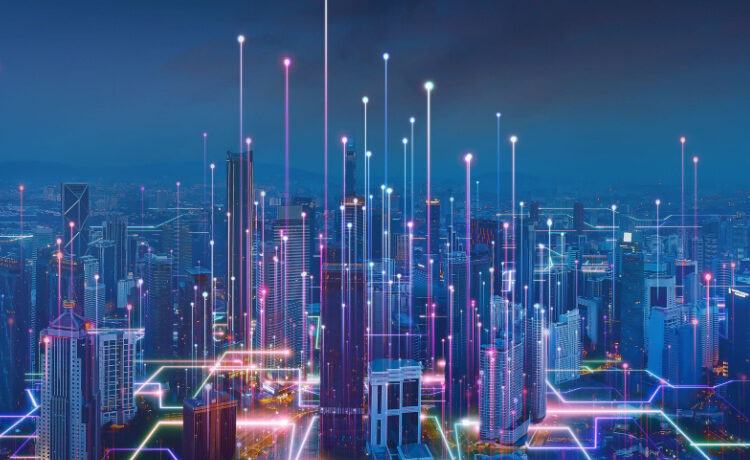[ad_1]
//php echo do_shortcode(‘[responsivevoice_button voice=”US English Male” buttontext=”Listen to Post”]’) ?>
Epishine and Atmosic Technologies recently collaborated to produce a self-powered beacon powered by indoor light that can yield big savings and reduce battery waste, leaders of the two companies told EE Times.
Potential applications include consumer electronics, remotes, keyboards, electronic shelf labels in retail stores, CO2 sensors, beacons for indoor positioning and tracking, passive lighting, as well as sensors keeping track of whether doors and windows are open, closed, locked, or broken, said Mattias Josephson, co-founder and VP of business development at Epishine.
For these applications, battery maintenance is the most expensive aspect in total cost of ownership, he said.
“To give a small device powered with disposable batteries a 10-year lifetime, you normally have to replace the batteries twice,” Josephson said. “In the building automation industry, they estimate the cost to replace each battery with man-hours, and the cost of the battery replacement is 50€ [$55]. That can get expensive if you have tens of thousands of devices over a large area. The savings for eliminating batteries can be two-thirds to 90%.”
Battery waste is a growing global problem; in 2020, 229,000 metric tons of portable batteries were sold in the EU and 99,000 tons were collected for recycling, according to Eurostat.
“Several of the companies we are in dialogues with have started to look closely at environmental impact,” Josephson said. “The disposable batteries are often the worst components in electronics waste. The forecasts say that we will throw away 78 million small IoT devices every day in 2025. They must be as environmentally friendly as possible.”

Paul Davis, senior director of product management at Atmosic Technologies, doubled down on that point.
“Billions of batteries are being thrown away each year and it only gets worse as the number of connected devices increases,” he said. “Atmosic is working to make the IoT more sustainable with our low-power, energy-harvesting solutions that allow devices to operate without any batteries or operate without needing to change batteries. This reduction in battery waste is not only good for the environment, but will also make it easier for companies to deploy and maintain larger numbers of IoT devices.
“Just think about the maintenance time and cost involved with changing the batteries in hundreds or thousands of electronic shelf labels in a retail store or sensors in a factory. Additionally, for consumer devices like remote controls or wireless keyboards, the use of energy harvesting to eliminate batteries makes life much more convenient for end users.”
The two companies announced their collaboration this year. Both companies produce components for energy harvesting. Epishine, based in Sweden, develops and makes printed organic solar cells: Its first product is an indoor solar cell optimized for harvesting indoor light into small, low-power electronics. The cells are composed of recyclable plastic and are printed in six layers, each layer one-thousandth the size of a strand of hair, Josephson said.
Atmosic is a U.S.-based, fabless semiconductor company that designs wireless solutions with an integrated power management unit (PMU) that can use harvested energy to reduce dependence on batteries. Atmosic’s wireless solutions are about four times more power-efficient compared with similar beacons, Davis said. The lower power consumption directly translates into a smaller PV cell size, further reducing the cost of adding energy harvesting, he said. The integration of energy harvesting power management directly onto the chip eliminates what would be a separate component in a typical wireless energy harvesting solution, further reducing the bill of materials for the end product, he added.
When Atmosic’s ATM3 Bluetooth system-on-chips (SoCs) are combined with Epishine’s indoor solar cell, the self-powered beacon can harvest enough energy to operate without any batteries, the companies said in prepared remarks.
“Atmosic’s ultra-low–power technology combined with our solar cell’s high performance really shows that there is already a solution for the IoT market’s deployment of billions of sensors,” said Niklas Forsgren, head of product integration at Epishine. “Previous issues regarding sustainability and cost of operating IoT devices on batteries have their solution right here.”
Atmosic’s Bluetooth SoC is designed from the beginning with low-power functionality and energy harvesting instead of batteries, said Jesper Nilsson, head of electronics at Epishine. This battery-free design reduces the number of components, yielding a board that is more robust, less costly and smaller in terms of both size and environmental footprint.
“To design good self-powered electronics, it’s important that the boot-up process isn’t too slow and heavy,” he said. “Atmosic designed their chip to start up very light and quickly. If you run out of light, this creates ‘self-healing’ devices. Extreme low-light conditions lead to a lower frequency of data, but the sensor doesn’t stay dead like when you run out of batteries.”
Eliminating the need for batteries opens possibilities for more applications, Josephson said.
“People are really interested in collecting data about everything,” he said. “A lot of data people are interested in collecting in remote places. The problem today is, it’s far too expensive to have wires drawn to every device. The next step is to use batteries, but it’s also too expensive to replace tens of thousands of batteries in a company. On top of that, there is the very bad environmental impact. Anything that has small batteries and lasts for years is a candidate to be powered with indoor light. Everything is going digital. We see new applications every week.”
[ad_2]
Source link

